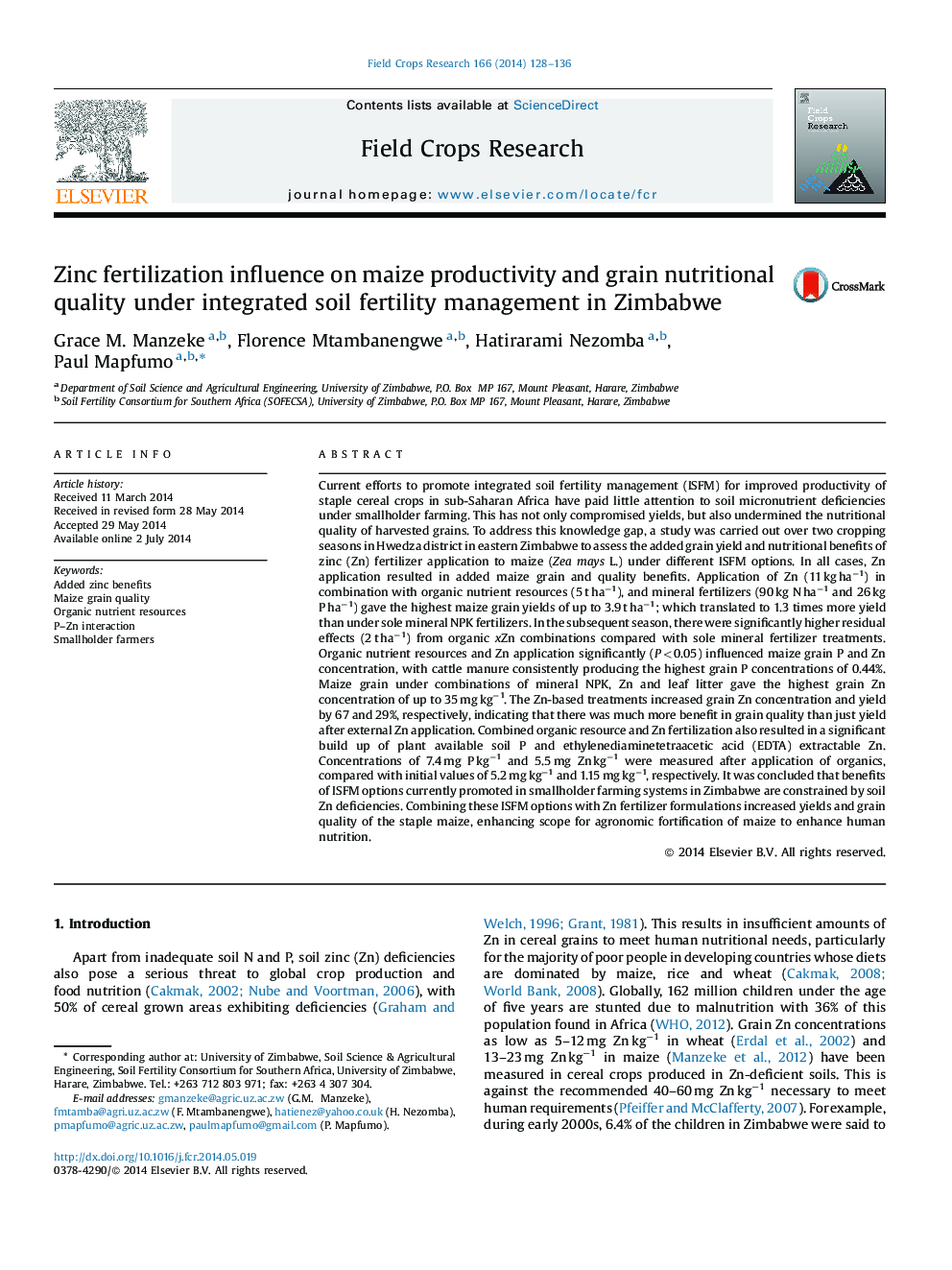| کد مقاله | کد نشریه | سال انتشار | مقاله انگلیسی | نسخه تمام متن |
|---|---|---|---|---|
| 4509998 | 1624697 | 2014 | 9 صفحه PDF | دانلود رایگان |
• Current smallholder farmer fertilization regimes promote Zn nutrient mining in soil.
• ISFM as presented to smallholder farmers is limited by lack of micronutrient inputs.
• Organic and inorganic co-application support better crop Zn nutrition.
• Benefits of Zn fertilization are greater in grain nutritional quality than yield.
• Agronomic fortification offers bright prospects for improved human Zn nutrition.
Current efforts to promote integrated soil fertility management (ISFM) for improved productivity of staple cereal crops in sub-Saharan Africa have paid little attention to soil micronutrient deficiencies under smallholder farming. This has not only compromised yields, but also undermined the nutritional quality of harvested grains. To address this knowledge gap, a study was carried out over two cropping seasons in Hwedza district in eastern Zimbabwe to assess the added grain yield and nutritional benefits of zinc (Zn) fertilizer application to maize (Zea mays L.) under different ISFM options. In all cases, Zn application resulted in added maize grain and quality benefits. Application of Zn (11 kg ha−1) in combination with organic nutrient resources (5 t ha−1), and mineral fertilizers (90 kg N ha−1 and 26 kg P ha−1) gave the highest maize grain yields of up to 3.9 t ha−1; which translated to 1.3 times more yield than under sole mineral NPK fertilizers. In the subsequent season, there were significantly higher residual effects (2 t ha−1) from organic xZn combinations compared with sole mineral fertilizer treatments. Organic nutrient resources and Zn application significantly (P < 0.05) influenced maize grain P and Zn concentration, with cattle manure consistently producing the highest grain P concentrations of 0.44%. Maize grain under combinations of mineral NPK, Zn and leaf litter gave the highest grain Zn concentration of up to 35 mg kg−1. The Zn-based treatments increased grain Zn concentration and yield by 67 and 29%, respectively, indicating that there was much more benefit in grain quality than just yield after external Zn application. Combined organic resource and Zn fertilization also resulted in a significant build up of plant available soil P and ethylenediaminetetraacetic acid (EDTA) extractable Zn. Concentrations of 7.4 mg P kg−1 and 5.5 mg Zn kg−1 were measured after application of organics, compared with initial values of 5.2 mg kg−1 and 1.15 mg kg−1, respectively. It was concluded that benefits of ISFM options currently promoted in smallholder farming systems in Zimbabwe are constrained by soil Zn deficiencies. Combining these ISFM options with Zn fertilizer formulations increased yields and grain quality of the staple maize, enhancing scope for agronomic fortification of maize to enhance human nutrition.
Journal: Field Crops Research - Volume 166, September 2014, Pages 128–136
